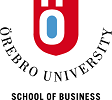No 2005:7: On Measurements of the Factor Content of Trade: - The Case of Sweden
Lars Widell
Additional contact information
Lars Widell: Department of Business, Economics, Statistics and Informatics, Postal: Örebro University, Department of Business, Economics, Statistics and Informatics, SE - 701 82 ÖREBRO, Sweden
Abstract: In this paper we evaluate different measurement practices when calculating the human capital content of a country's net trade. The calculations are performed using a structural measure developed by Lundberg & Wiker (1997) that relates the average factor input requirements in exports relative to those in imports. We find the calculations highly dependent on measurement practice when performing those on a cross-section for a single year. However, when calculating the human capital content of trade over time instead, the inclusion of service sectors in the trade vector as well as variable factor input requirements seem to be very important.
This paper then continues with an empirical evaluation of the human capital content of Swedish trade in 1986-2000. We find that during the period 1986-1992, the average human capital intensity in exports relative to imports was slightly increasing, mirroring an increased specialization in human capital-intensive production. After 1992, though, there is a rapid decrease in the human capital content of trade in exports relative to imports. In 1995 there is a recovery, but the recovery seems both to be leveling out and turning down in the late 1990's. In this paper we also draw the conclusion that a well functioning educational system is important for a country's comparative advantage.
Keywords: Factor content of trade; educational policy; high skilled labor
41 pages, August 12, 2005
Price: 120
Full text files
wp-7-2005.pdf
Questions (including download problems) about the papers in this series should be directed to ()
Report other problems with accessing this service to Sune Karlsson ().
RePEc:hhs:oruesi:2005_007This page generated on 2025-12-09 04:36:47.

